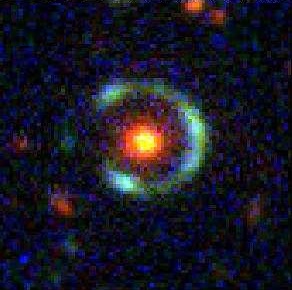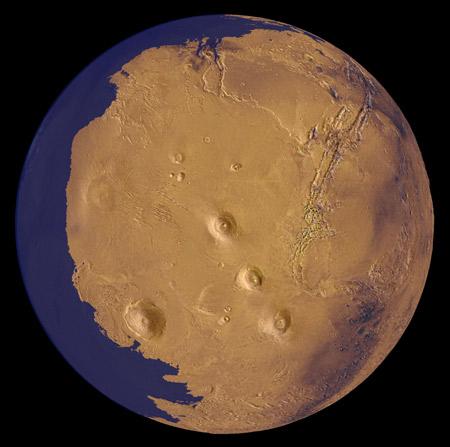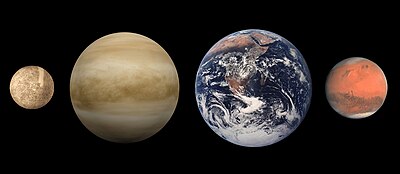By: Fraser Cain (Universe Today)
If you want to peer into the furthest reaches of space, a regular telescope won't do. You need to harness the power of a massive galaxy to bend light from an even more distant galaxy - a gravitational lens. And a team of European astronomers have found one of the luckiest discoveries of all, an Einstein ring, where the lens and more distant galaxy line almost perfectly. Because of its unique shape, they're calling it "The Cosmic Horseshoe".
 Image Credit: Universe Today
Image Credit: Universe Today The discovery was made by more than a dozen astronomers from a handful of European universities, from England to Russia. They published their discovery in a research paper called The Cosmic Horseshoe: Discovery of an Einstein Ring around a Giant Luminous Red Galaxy, which has been submitted to the Astrophysics Journal.
They turned up the object after poring through data in the massive Sloan Digital Sky Survey. This survey uses robotic telescopes to capture images of the night sky; eventually it will map out 25% of the sky, seeing 100 million objects. Astronomers regularly look through this vast quantity of data, and pull out all kinds of interesting objects.
Such as the Cosmic Horseshoe.
Then they did follow-up observations using the 2.5 metre Isaac Newton Telescope in La Palma and the 6 metre BTA telescope in Russia. This gave the detailed image attached to this story, as well as the spectral information to determine the chemical constituents of the lens and lensed object.
Look at the picture, and you can see a red spherical galaxy surrounded almost completely by a blue ring. In reality, this is a relatively nearby galaxy, located 4.6 billion light-years away (the lens), and then a more distant blue galaxy located 10.9 billion light-years away (the lensed object).
The two line up perfectly from our point of view, so that light from the blue galaxy is focused by the gravity of the lens. Light that would head off into space is turned back towards the Earth. All this additional light allows astronomers to see what would normally be an invisible object. In fact, the two are lined up so perfectly, that the lensed galaxy has been turned into a ring that wraps 300-degrees around the lens.
The lens is an extremely massive luminous red galaxy, containing 5 trillion times the mass of the Sun. For comparison, our own Milky Way only contains 580 billion solar masses.
And this is just the "telescope".
The more distant, lensed object is a starburst galaxy undergoing furious rates of star formation - evidenced by the blue spectrum of its light. If it weren't behind the lens, astronomers wouldn't even know it was there. But because it's directly behind the lens, its light has been focused into a nearly complete ring around the lens. Since it's 10.9 billion light-years away, we see it at a time when the Universe was less than 3 billion years old.
This discovery gives astronomers two useful directions for further research: dark matter distribution around luminous red galaxies, and the formation of stars in the early Universe.
Original Article: Universe Today

















